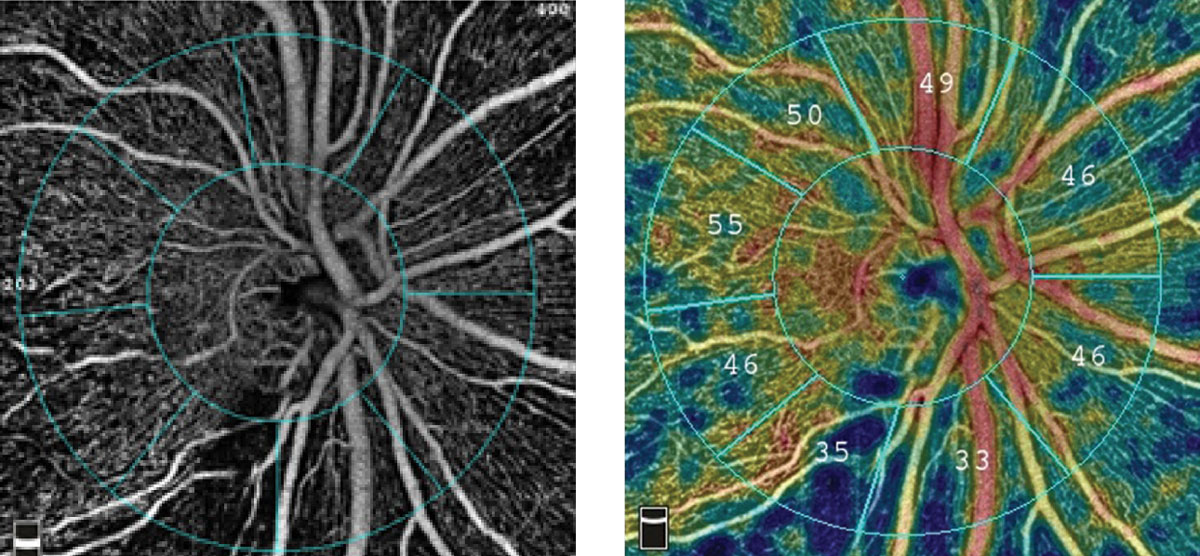 |
Observing for rapid vessel density loss in glaucoma patients may help monitor progression and predict visual field loss. Photo: Julie Rodman, OD. Click image to enlarge. |
Vessel density and visual field loss were found to have an association in a recent retrospective study of 38 glaucoma suspects and 86 POAG patients. Subjects underwent three OCT-A scans to measure rates of vessel density loss; their visual field loss was calculated from the visual field mean deviation over the four-year follow-up period.
The annual rate of vessel density change was -0.8% during the mean initial follow-up of 2.1 years. The researchers defined fast progressors (n=62) as those with an annual rate of vessel density loss ≥-0.75% and slow progressors (n=62) as those with <-0.75%. The annual rates of visual field loss were -0.15dB and -0.43dB for slow and fast progressors, respectively. A multivariable model showed that the fast progression group had faster overall rates of visual field loss (-0.17dB).
“Rapid vessel density loss during an initial follow-up period was associated with higher concurrent and subsequent rates of visual field loss during an extended period,” the researchers wrote in their paper. “This finding is clinically relevant if subsequent prospective studies confirm that fast progressors identified by OCT-A are at higher risk of functional loss and may need more intensive observation and treatment.”
They noted that their findings support the use of OCT-A for monitoring glaucoma patients.
Nishida T, Moghimi S, Wu J, et al. Association of initial optical coherence tomography angiography vessel density loss with faster visual field loss in glaucoma. JAMA Ophthalmol. February 24, 2022. [Epub ahead of print]. |

